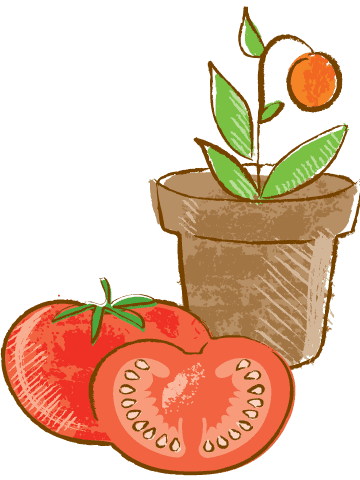Eat a Rainbow of Colors
Fruits and vegetables get their color from naturally occurring micronutrients like vitamins and phytonutrients — essentials for good health. One key function of these nutrients is antioxidants, which include beta-carotene, lutein, lycopene, and vitamins A, C and E. (Not all antioxidants impart color, but eating a colorful range of foods helps you get them all!)
The more naturally occurring colors of whole foods — including whole grains and beans — you eat at each meal or snack, the better. So, aim to "eat a rainbow" throughout the day and week to help your body get a complete range of nutrients. Here are some examples:
- Red — apple, cherries, red peppers, strawberries, tomatoes & watermelon
Possible nutrients: flavonoids, lycopene, vitamin C, and folate
Supports: Heart health & memory
- Orange/Yellow — cantaloupe, carrots, mango, oranges, pineapples, pumpkin, sweet potatoes & yellow peppers
Possible nutrients: beta-carotene, vitamins A & C
Supports: healthy eyes, heart health & immune function
- Green — asparagus, broccoli, cabbage, collards, cucumbers, grapes, green beans, green peppers, kale, peas & spinach
Possible nutrients: chlorophyll, vitamin K, carotenoids, isothiocyanates & omega-3 fatty acids
Supports: healthy bones, teeth & eyes
- Blue/ Purple — beets, blackberries, blueberries, dark beans, eggplant & figs
Possible nutrients: anthocyanin
Supports: memory and healthy aging
- White — ginger, jicama, onions & mushrooms
Possible nutrients: flavonoids
Supports: heart health and good cholesterol levels
Tips:
- Start slowly: Gradually transition to filling at least half of your or your child’s plate with colorful veggies at each meal.
- Put at least one produce item of each color on the shopping list every week.
- Serve a weekly rainbow dinner with every color represented at one meal.
- Rinse fresh fruits and veggies and store them within kids’ reach so they're ready to grab and eat.
Try this recipe: Rainbow Soba Salad
Read on: Check out our Better Bites: Eat a Rainbow and discover more easy tips, games and recipes like Rainbow Fruit Skewers with Yogurt Dip.



